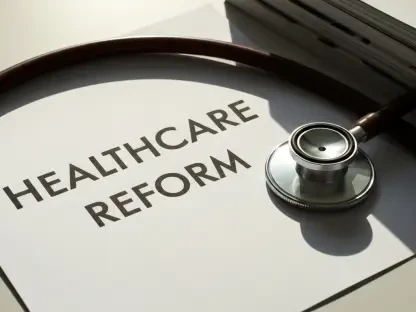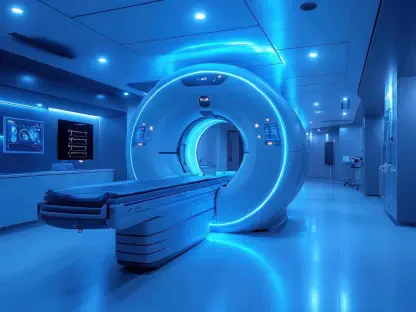Long COVID continues to be a significant public health challenge months or even years after the initial infection. Millions of individuals wrestle with an array of symptoms, making everyday tasks a struggle. This article delves into the multifaceted nature of Long COVID, its symptoms, affected populations, associated health risks, and strategies for management and support.
The Condition and its Symptoms
Defining Long COVID
Long COVID encompasses a variety of symptoms that persist for at least three months post-initial infection with SARS-CoV-2. These symptoms are vast, including fatigue, brain fog, breathing difficulties, muscle aches, and cognitive impairments. The broad spectrum of symptoms makes it challenging to diagnose and manage effectively as they can vary greatly among individuals. Dr. Michelle Morse from the NYC Department of Health and Mental Hygiene describes Long COVID as a condition that adversely affects patients’ quality of life and their ability to perform daily tasks.
Further complicating the diagnosis is the unpredictability of symptom onset and severity. Some individuals experience mild symptoms, while others find daily activities such as climbing stairs or maintaining full-time employment nearly impossible. The CDC underscores that Long COVID poses a significant public health challenge due to its persistent nature, which requires ongoing research and tailored healthcare approaches to offer more effective solutions for symptom management.
Chronic Symptoms and Public Health
The broad and persistent nature of Long COVID symptoms poses a unique challenge for both patients and healthcare providers, with many individuals finding it difficult to perform daily activities. Persistent fatigue and brain fog can significantly impair cognitive functions, making tasks that require concentration and mental clarity strenuous. Muscle aches and breathing difficulties add further physical burdens, all compounded by an overall depleted sense of well-being.
Addressing Long COVID is crucial for public health as the ramifications extend beyond individual health concerns to societal impacts, including healthcare resource allocation and economic productivity. The complex nature of Long COVID symptoms necessitates a multifaceted approach for effective treatment and support. Understanding the underlying mechanisms that cause these symptoms requires ongoing research and collaboration among the medical community to develop comprehensive care strategies for affected individuals.
Vulnerable Populations
Susceptible Groups
Certain demographics, such as older adults, those with preexisting health issues, and individuals hospitalized during their initial illness, show higher susceptibility to Long COVID. Age and underlying health conditions like diabetes, cardiovascular diseases, and respiratory ailments exacerbate the likelihood of prolonged symptoms. These groups already possess vulnerabilities that COVID-19 can magnify, resulting in complex health challenges that require specialized care and long-term monitoring.
Vaccination status also significantly impacts the likelihood of developing long-term symptoms. Unvaccinated people are more prone to severe illness from the initial COVID-19 infection, which correlates with a higher incidence of Long COVID. The role of vaccinations extends beyond preventing the initial infection to protecting against prolonged post-viral complications. Research continuously underscores the importance of vaccinations in reducing both the severity and duration of COVID-19 symptoms, which can mitigate the long-term impact significantly.
Racial and Ethnic Disparities
Hispanic and Black communities report long-lasting symptoms more frequently, highlighting the need for equitable healthcare initiatives to prevent and manage Long COVID. These disparities reflect broader issues of access to healthcare, socioeconomic factors, and preexisting health conditions that already disproportionately affect these communities. The U.S. Census Bureau’s Household Pulse Survey data indicate that systemic inequalities in the healthcare system result in delayed or inadequate treatment, exacerbating the prolonged symptoms associated with Long COVID.
Efforts to address these disparities involve ensuring equitable access to quality healthcare and preventive measures. Targeted outreach programs and community-based healthcare initiatives aim to bridge gaps and provide vital resources to communities disproportionately affected by COVID-19. Effective management of Long COVID in these populations requires a concerted effort by public health officials, policymakers, and healthcare providers to implement comprehensive strategies that address both immediate health needs and long-term support.
Serious Health Risks
Complications Beyond Initial Infection
Long COVID can lead to severe conditions like heart disease, diabetes, and autoimmune disorders, complicating diagnosis and treatment efforts. The chronic nature of this condition means that patients may develop secondary health issues as their bodies struggle to recover from the initial viral attack. Persistently high levels of inflammation can result in complications such as myocarditis, a heart condition, or the exacerbation of metabolic syndromes leading to diabetes.
Autoimmune disorders are particularly concerning as the immune system’s response to the virus can trigger ongoing attacks on the body’s organs and tissues. These complications create a cascade of health issues that can further impair an individual’s quality of life and increase healthcare costs through prolonged or recurrent medical treatments. Understanding these risks is vital for devising comprehensive treatment plans that address the breadth and depth of several chronic conditions associated with Long COVID.
Long-Term Cardiovascular Risks
Research from the Cleveland Clinic indicates a heightened risk of major cardiac events for individuals previously infected with COVID-19, demonstrating the long-reaching impact of the virus. Individuals with Long COVID face a doubled risk of experiencing major cardiac events like heart attacks, strokes, or even death for up to three years following their diagnosis. Notably, those hospitalized for COVID-19 show even higher susceptibility, regardless of their previous history of heart disease.
This data highlights the necessity of long-term cardiovascular monitoring and preventive care for patients recovering from COVID-19. The extended period during which such risks persist indicates that cardiovascular health should be a critical focus in post-COVID recovery strategies. Medical practitioners must be particularly vigilant in tracking heart health in these patients, incorporating regular screenings and interventions aimed at reducing the risk of severe cardiac events.
Societal Impact
Daily Activity Limitations
A substantial number of adults with Long COVID experience limitations in their daily activities, with many unable to work due to the condition’s debilitating effects. The CDC reports that one in four adults enduring this condition face limitations that affect their ability to perform daily tasks, such as cooking, cleaning, or commuting. These limitations significantly impair quality of life, often resulting in a reliance on family members or social support systems for assistance with basic functions.
This impact extends to the workforce, where over one million Americans may be unable to work due to Long COVID’s debilitating effects. The economic burden of lost productivity and ongoing medical costs poses significant challenges for both individuals and society at large. Addressing these limitations requires collaborative efforts between employers, healthcare providers, and policymakers to develop supportive measures such as flexible work arrangements and accessible healthcare services.
Worsening Preexisting Conditions
The condition can exacerbate existing health issues, transforming temporary health challenges into long-term complications such as the progression from pre-diabetes to diabetes. Dr. Griggs, a community medicine doctor, highlights that Long COVID can aggravate pre-existing issues, leading to more severe chronic health problems. The persistent and aggravated symptoms not only decrease patients’ daily functioning but also increase their dependency on medical systems for managing escalating health conditions.
Consequently, the necessity for enhanced medical surveillance and tailored treatment plans becomes paramount in mitigating the risk of worsening preexisting conditions. Long COVID patients often require multidisciplinary care approaches encompassing diet management, physical therapy, and regular monitoring to prevent long-term health deterioration. Creating robust care protocols aimed at early detection and management of exacerbated conditions can significantly improve life quality for those affected.
Preventive Strategies
Preventive Measures
The CDC recommends preventive strategies, including up-to-date vaccinations, good hygiene, and seeking prompt medical care to reduce Long COVID risks. Vaccination remains a cornerstone in preventing severe COVID-19 symptoms and subsequently reducing the possibility of developing Long COVID. Maintaining proper hygiene practices, such as regular handwashing and wearing masks in crowded places, can also minimize exposure to viral particles, adding another layer of prevention.
Prompt medical intervention upon experiencing initial COVID-19 symptoms can play a crucial role in preventing the progression to Long COVID. Ensuring individuals know when to seek medical care, recognize early symptoms, and adhere to recommended health guidelines can aid in controlling the spread and severity of respiratory illnesses. Regular updates and public health advisories from the CDC are essential in keeping the public informed on strategies to prevent Long COVID.
Reducing Respiratory Illness Complications
Enhancing indoor air quality and implementing preventive steps when symptoms arise can help mitigate further complications related to respiratory illnesses. Improving ventilation in living and working environments minimizes the concentration of airborne pathogens, thereby reducing the risk of infection and its subsequent complications. Utilizing air filtration systems and ensuring proper airflow can significantly improve respiratory health.
Preventive measures also include immediate actions upon developing respiratory symptoms. Individuals experiencing signs such as persistent cough or shortness of breath are advised to seek medical attention promptly. Early diagnosis and treatment can prevent the escalation to more severe conditions, ultimately reducing the incidence of Long COVID. Healthcare professionals should emphasize the importance of timely intervention and provide resources and guidance on managing initial COVID-19 symptoms effectively.
Support Systems and Resources
NYC Health Initiatives
New York City’s AfterCare Program connects individuals with resources to manage Long COVID symptoms. This initiative offers continuous support for those grappling with the long-term effects of the virus by linking them to relevant health and social services. People experiencing symptoms for more than 28 days post-infection benefit from personalized assistance aimed at improving their health outcomes and reintegrating them into daily life activities.
Support groups such as Long COVID Alliance and Long COVID Families play a critical role in providing community-based assistance. These groups offer invaluable resources for patients and caregivers, including coping strategies, shared experiences, and advocacy for further research and treatment solutions. The sense of solidarity within these communities fosters an environment where affected individuals can find emotional support and practical advice tailored to their specific needs.
Specialized Support for Children
Children with Long COVID require tailored care and resources, such as “Pacing Penguins,” to manage their condition while ensuring educational accommodations under Section 504. The unique challenges presented by Long COVID in children necessitate specialized interventions to support energy management and prevent symptom exacerbation. Educational materials like “Pacing Penguins” equip children and their caregivers with strategies to balance activity and rest effectively.
Additionally, the U.S. Department of Education ensures that students with Long COVID receive necessary accommodations under Section 504. This federal provision mandates that educational institutions must provide reasonable adjustments to facilitate learning for students affected by persistent Long COVID symptoms. Tailored educational support considers the varied health needs and learning capacities, ensuring that no child is disadvantaged due to their health condition.
Employment Accommodations
Workplace Guidance
The Department of Labor and the Job Accommodation Network offer guidelines to enable flexible work arrangements for employees struggling with Long COVID. Employers are encouraged to consider modifications that accommodate the fluctuating health needs of affected employees, thereby creating supportive work environments that enhance productivity while respecting health challenges. This includes implementing remote work options, adjusting schedules, and modifying job responsibilities.
Guidance from these institutions serves as a framework for employers to develop policies that recognize and address the unique needs of Long COVID sufferers. Workplace accommodations ensure that valuable employees remain engaged and productive without compromising their health. By promoting inclusive work practices, businesses can retain skilled staff and foster a culture of empathy and understanding toward health-related challenges.
Supportive Work Environments
Providing flexible schedules, remote work options, and adjusted job responsibilities helps retain valuable staff and supports their health needs. Employers play a pivotal role in ensuring that Long COVID sufferers can balance work responsibilities with their health requirements. Flexible schedules allow employees to manage fluctuating energy levels and symptoms efficiently, promoting a healthier work-life equilibrium.
Remote work options, in particular, provide a critical lifeline for those whose symptoms prevent them from commuting or working in traditional office settings. Adjusted job responsibilities that accommodate reduced physical exertion or cognitive strain further support employees in maintaining their professional roles. Implementing these accommodations demonstrates a commitment to employee well-being and can enhance overall workplace morale and loyalty.
Conclusion
Long COVID remains a pressing public health issue, affecting millions of people months or even years post-infection. Those grappling with Long COVID often find daily activities to be an uphill battle due to the myriad symptoms they experience. This phenomenon has forced both medical professionals and patients to adapt to new challenges due to the complex nature of Long COVID symptoms. The article explores the diverse range of symptoms, the demographics most at risk, and the health complications tied to Long COVID. For example, many individuals experience fatigue, difficulty concentrating, and persistent pain that severely impact their quality of life. There’s an urgent need to develop effective management strategies as well as support systems to help those coping with Long COVID. Addressing this issue involves increased research, better healthcare infrastructure, and heightened awareness to alleviate the burden faced by so many on a daily basis.









